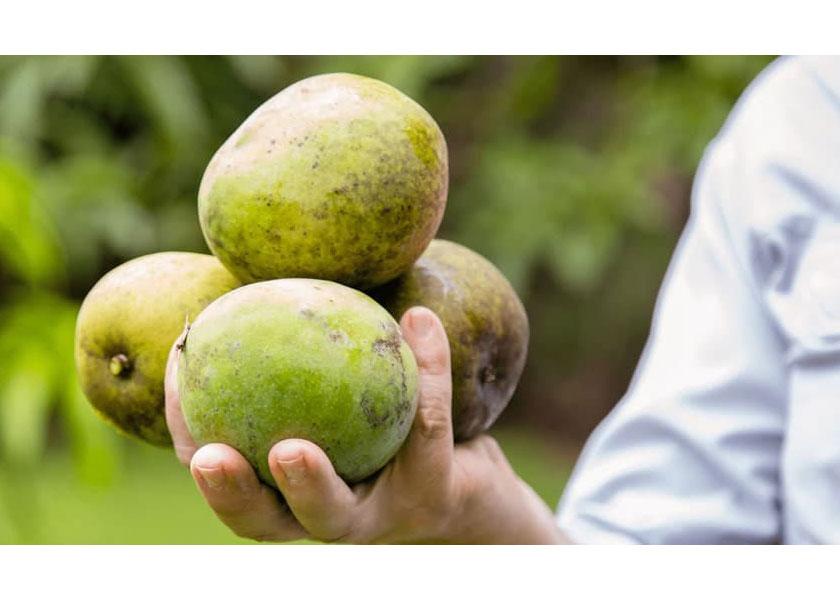What’s the mango’s origin story?

Mainstream U.S. consumers are starting to realize how awesome the super-sweet, golden flesh of mangoes can be, joining the rest of the world in its appreciation.
India, China and Thailand are the world’s largest producers of mango, but Mexico and countries in the Central and South America are the favored importers for the U.S.
The mango may be one of the most popular fruits worldwide — except in the U.S., where bananas, apples and grapes are favored more.
So, where are mangoes from originally?
Mangoes came from India more than 5,000 years ago, according to the National Mango Board.
India produces the most mangoes in the world — 40% of global supplies — yet comprises only 1% of the international mango trade, according to Forbes. So India eats most of the mangoes it grows.
Fun facts:
- The paisley pattern, developed in India, is based on the shape of a mango;
- A basket of mangoes is considered a gesture of friendship in India; and
- Mangoes are related to cashews and pistachios.
Mango seeds traveled with humans from Asia to the Middle East, East Africa and South America beginning around A.D. 300 or 400.
Spanish explorers brought mangoes to Mexico in the 1600s, and the first recorded attempt to introduce the mango into the U.S. came in 1833 to Florida.
“It’s consumed worldwide, so there are so many different ways you can use it,” said Jessica Bohlman, the National Mango Board’s communications manager. “We want to share how chefs are incorporating them into cuisine in all different locations.”
The board plans to spotlight the many ways to use mangoes: in noodle dishes such as pad Thai, pickled mangoes like in Indonesia, or sliced on a stick with the skin peeled back as at street vendors in Latin American countries. Think mango sushi, burrito bowls, glazed pork tenderloin, shrimp lettuce wraps, ceviche, slaw and curries.
In India, mangoes are used in savory dishes more often than sweet, such as the Punjabi dish called dal, a lentil stew.
“There’s nothing more cultural than food, and you can discover other cultures with your palate. So, we’re really focusing in on that,” Bohlman said. “And for those of us still trying to be safer and stay home, we can travel through the cuisines we cook in our kitchens.”







